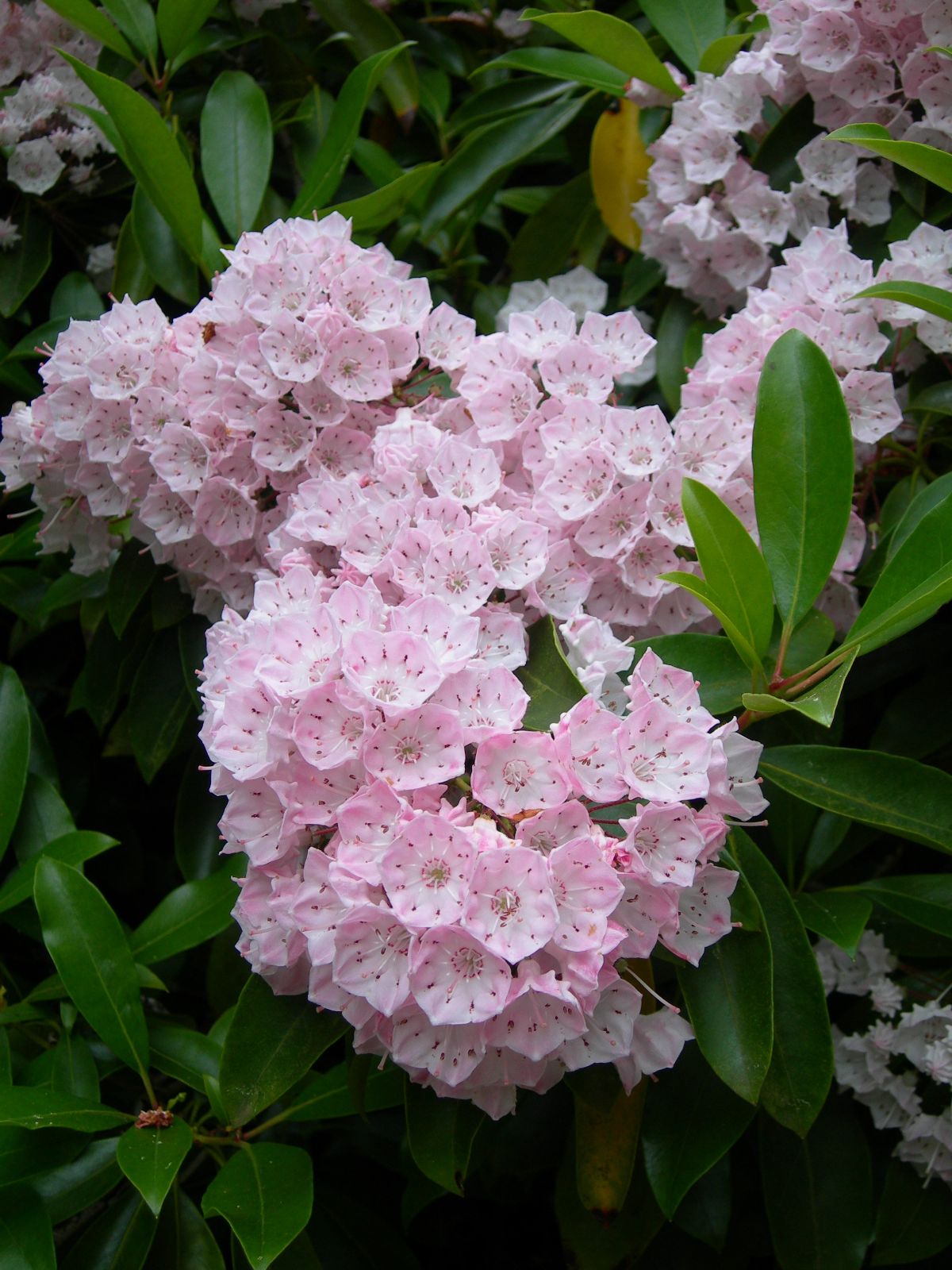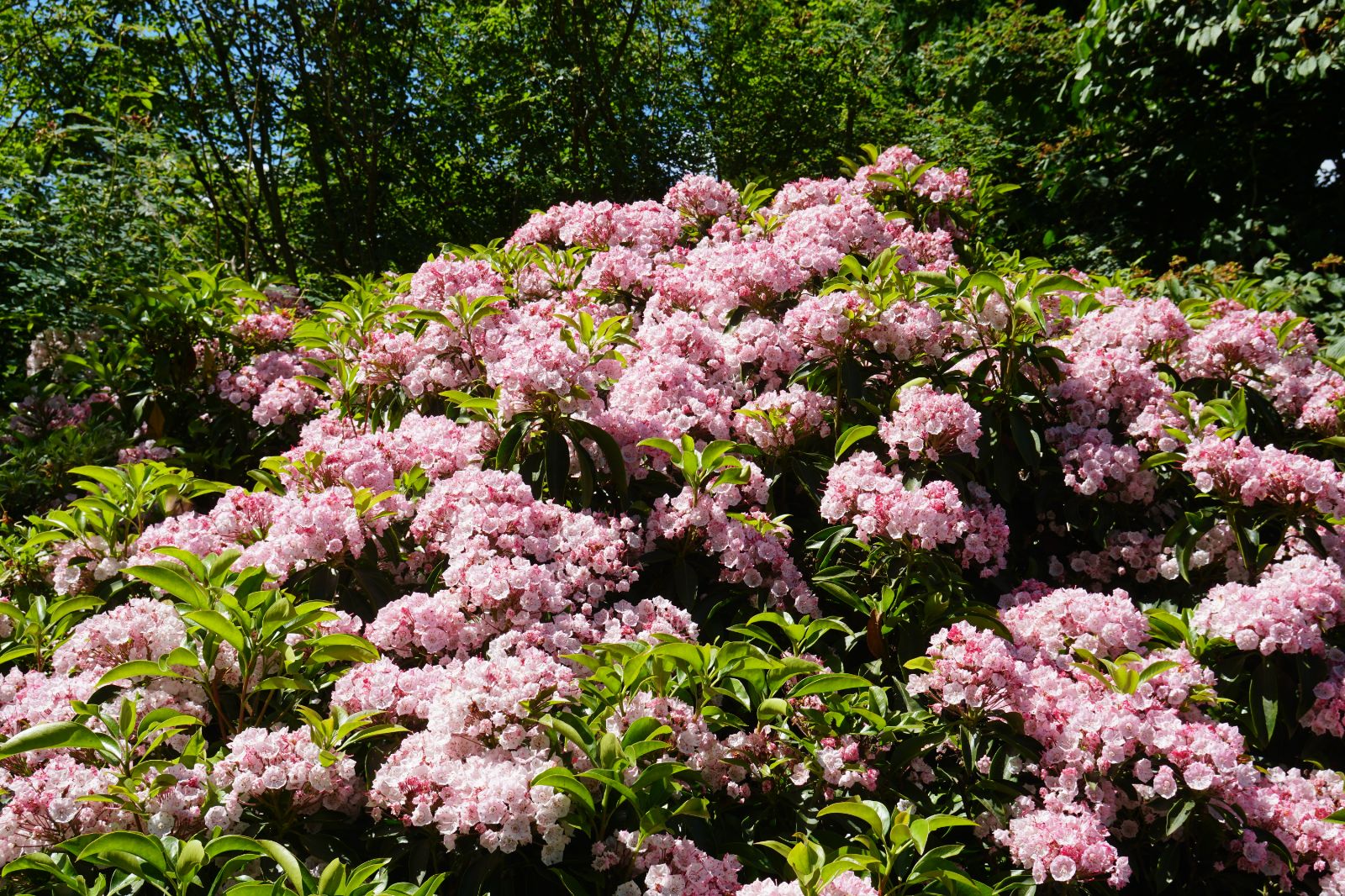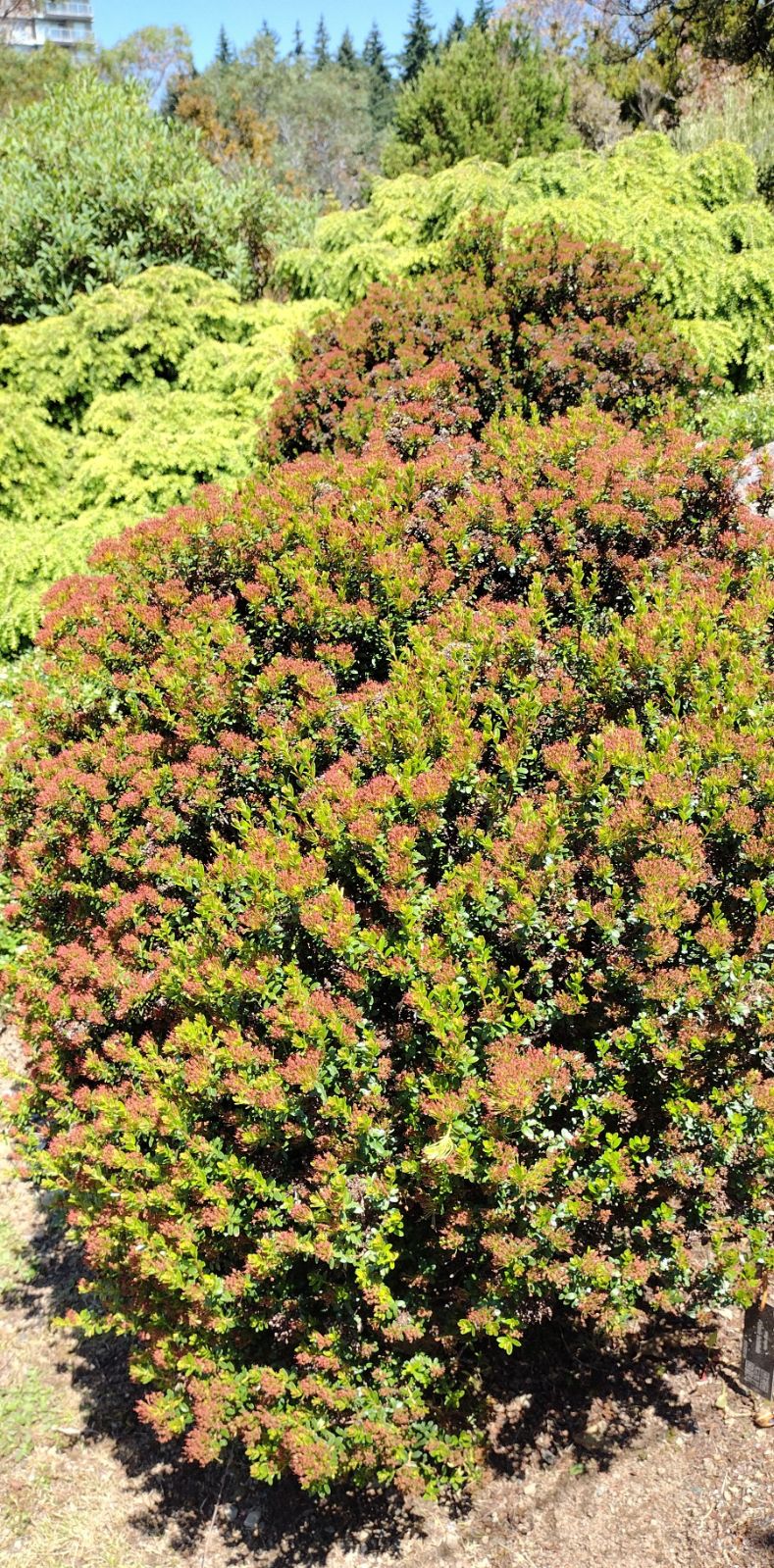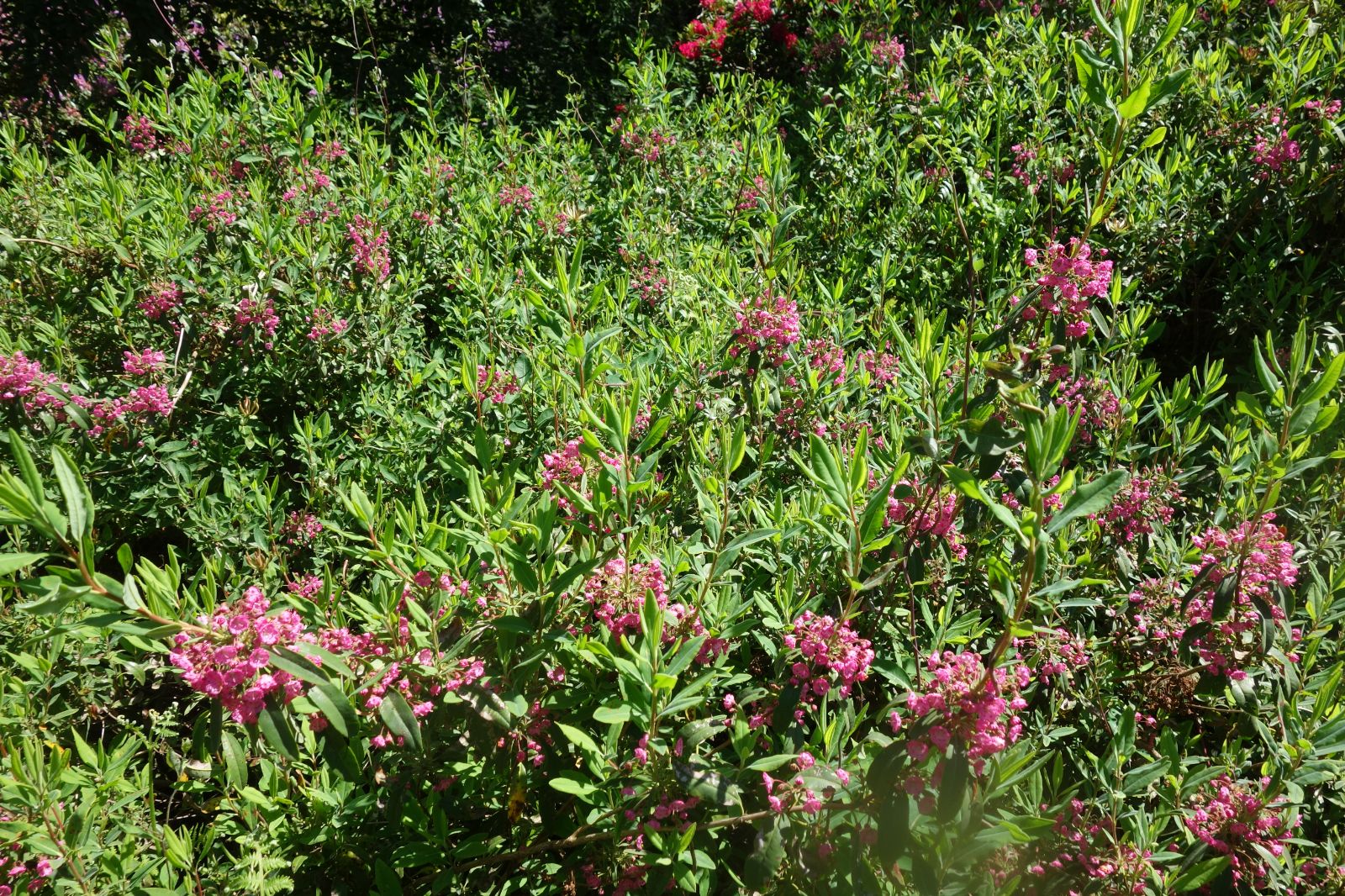Kalmia
Credits
Article from Bean's Trees and Shrubs Hardy in the British Isles
Recommended citation
'Kalmia' from the website Trees and Shrubs Online (treesandshrubsonline.
Family
- Ericaceae
A small group of shrubs, mostly evergreen, native of N. America, and named by Linnaeus in honour of Peter Kalm, one of his pupils, and the author of a famous 18th-century book of North American travel. They are all handsome plants, especially K. latifolia and K. polifolia, with the leaves in some species alternate, in others opposite or in threes. Flowers five-parted, fiattish, open, and produced in showy clusters. They show an interesting mechanism to secure fertilisation. There are ten stamens, which on first expanding are bent back so that the anthers are held in little cavities in the corolla. The ‘knee’ formed by the stalk of the stamen is sensitive, and when the pollen is ripe, if it be touched, the anther is released with a jerk, sending a little dust of pollen in the direction of the stigma, or over the insect whose movements set it in motion. The fruit is a globose capsule, five-celled and many-seeded. The foliage of kalmias is mostly considered poisonous to animals that graze on it. K. angustifolia is on this account known as ‘lamb-kill’ in the United States.
Kalmias like a peaty soil and cool, permanently moist conditions at the root. They are best propagated by seed, which should be sown as advised for rhododendrons, and afterwards pricked off in boxes. K. polifolia may be increased by cuttings of moderately ripened growths in July and August.
From the Supplement (Vol.V)
As briefly mentioned in the reprints of Volume II, two revisions of the genus have been published – by John E. Ebinger in Rhodora, Vol. 76, pp. 315–98 and by Russell M. Southall and James W. Hardin in Journ. Elisha Mitchell Soc., Vol. 90, pp. 1–24, both in 1974. For a check-list of cultivars see Bull. Amer. Ass. Bot. Gard., Vol. 17(4), pp. 99–106 (1983).




